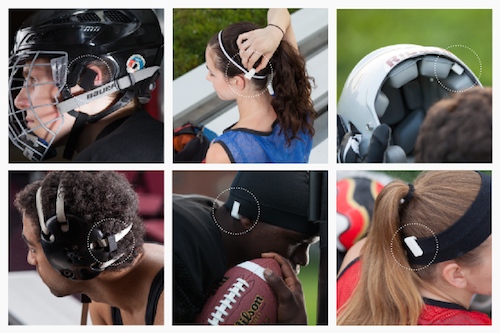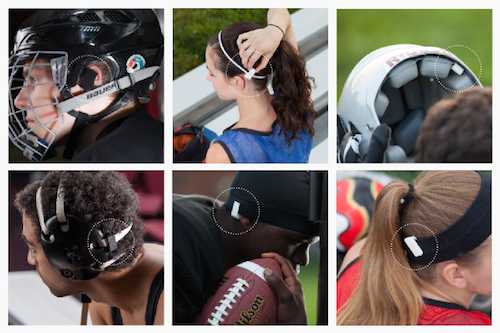Before the domestic violence and now child abuse scandals rocked the NFL, the leading concerning narrative was the prevalence of concussions or brain injuries. Concussions are a big problem in sports because we’re beginning to understand how frequently they occur to athletes and how serious their long-term consequences are. My colleague, Dean Russell Bell, wrote a post for Dear Sports Fan a couple of years ago explaining the issue of brain injuries in sports. In it he wrote that:
What also contributes to [the problem of brain injury in sports] is the so-called “sub-concussive” hits – the thousands of times a player will clash with someone and jostle the brain around in the skull just a little bit. This is one of the things that makes football the center of the brain injury story. In football, offensive and defensive linemen clash every single play with the force of a small automobile accident. Turns out these add up too, especially when you consider these guys have been playing football since they were kids. All of those little hits keep accumulating, and the concern now is that this is an issue that’s even bigger than pro football – that college and maybe even high school players may do some long-term brain damage. That issue is much more difficult to address, because you can’t get rid of that type of contact – it happens every play, all over the field.
What do you do if you can’t remove the source of danger? Well, you might look to at least monitor it so that you can pull a player out of a game once he or she has suffered a brain-rattling hit. Two MIT graduates are trying to make that goal a reality and they could use our help for their Kickstarter campaign. Ben Harvatine and Seth Berg started working on the Jolt Sensor while they were students at MIT. Harvatine suffered a concussion while wrestling for the MIT team but, like many athletes, he didn’t identify it as a concussion, and kept playing for a while. In their intro video, the two entrepreneurs mention that “the most dangerous thing an athlete can do after suffering a concussion is to get back on the field and continue playing.” Right after a first concussion, people are more likely to get a second concussion, and those concussions are more likely to have serious effects. In a tiny segment of athletes, unfortunately almost totally young athletes, a second concussion, can lead to second impact syndrome which is often fatal. Preventing secondary concussions by identifying first concussions is a valuable mission.
The Jolt sensor is basically a tiny clip with an accelerometer in it. Clip it to a football helmet or a headband and it will track the motion of an athlete’s head and send off alerts when it senses dramatic and potentially dangerous motion. Not only does the sensor buzz and light up, but more importantly, it sends an immediate alert to a mobile app where a parent or coach can see it and act to take the player off the field. Once on the sidelines, the Jolt app switches over to a diagnostic exam which tests against a player’s baseline scores to see if they have a concussion. I admire the way Harvatine and Berg have thought about the operational problems of brain injuries in sports as well as the scientific and medical ones.
A couple notes of caution about this project. The first, which is made very clear in the Kickstarter campaign page, is that Harvatine and Berg are not doctors, they make no promises that this device can actually diagnose concussions, and they recommend that any athlete who suspects having had a concussion be treated by a real, live doctor. The second is that devices like this have faced an uphill battle in the past. As the Washington Post’s Marissa Payne wrote in her profile of the Jolt Sensor, there have been serious objections from helmet makers, leagues, and schools to other devices like this. It’s hard to understand why anyone would object to a device that tries to make sports safer for everyone but if you think about it in terms of being an authority that could get sued, it makes a twisted kind of sense. The use of a concussion prevention device by a league or school might make it seem like that organization is vouching for the safety of anyone who doesn’t trigger the sensor’s alert. If that person gets a concussion and keeps playing because the sensor didn’t work, then you could perceive it as being the organization that bought the sensors’ fault. As for the helmet makers? Sensors like this simultaneously point out that helmets are virtually useless against concussions and undercut the great new concussion technology that the helmet companies are themselves trying to develop.
All objections aside, the Jolt sensor looks like a great device and its mission is a good one. They’re trying to raise $60,000 by Friday, September 26 to produce a final batch of sensors for testing and certification, and if all goes well, public consumption. If you want to give, even as little as a dollar, to this campaign, go do it here!


